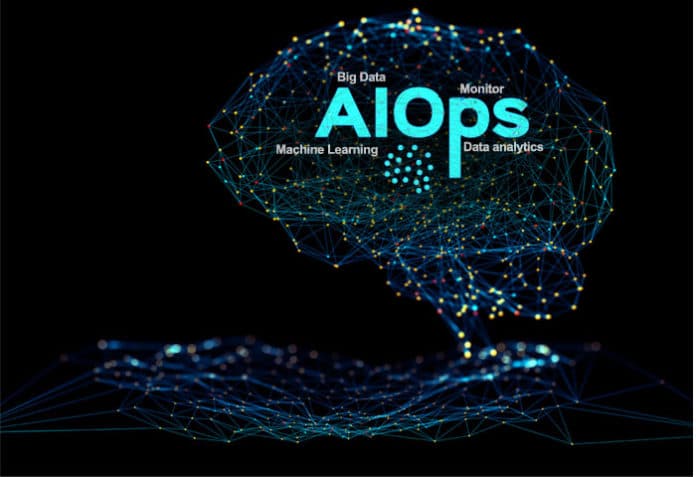Digital transformation is constantly forcing many enterprises to move towards automation. IT leaders are now turning to artificial intelligence for IT operations (AIOps) to enhance their businesses, improve risk management, deliver faster services, and get actionable reports for better analysis.
Artificial intelligence for IT operations (AIOps) helps businesses become more efficient. It intelligently assists enterprises by defining actual issues using predictive analytics. It also focuses on the most critical issues that need to be resolved, getting to the root cause of problems, and offers accurate recommendations to correct them while reducing MTTR (mean time to resolution).
What is AIOps?
According to a McKinsey report, “The most advanced deep learning techniques deploying artificial neural networks could account for as much as US$ 3.5 trillion to US$ 5.8 trillion in annual value, or 40 per cent of the value created by all analytics techniques.”
IT leaders are turning to AIOps as a solution to automate mundane tasks and authorise their IT teams to deliver better services and get actionable insights. In simple words, AIOps is a solution that includes machine learning and data analytics into IT operations to troubleshoot, monitor, and achieve other network management goals.
What challenges does AIOps address?
To stay ahead in this competitive era, businesses must ensure the end user experience remains flawless and meets continuously growing demands. Technology has become important for most businesses, but it also comes with major challenges.
IT has traditionally worked in silos. Each component of the technology stack is divided among teams including developers, network admins, security admins, and business leaders. They are completely unaware of the things that are happening around the infrastructure. AIOps can help enterprises break down processes and predict failures. Let us go through some of the challenges that enterprises can address using AIOps.
Problem resolution: AIOps is the best solution to reduce silos and reshape an environment that can provide comprehensive monitoring across all aspects of the IT infrastructure. AIOps enabled automation is important for identifying and resolving problems in real-time as soon as they come up and before the end user is impacted. The automation can save time for IT teams so that they can focus on other essential tasks.
Identifying the root cause: IT teams need to quickly identify the root cause of an issue. Enterprises spend a massive amount of money on their IT infrastructure, so they need to focus on how they can monitor their events, logs, errors, and anomalies on a centralised AIOps platform that can quickly compare all these metrics, point out issues, and automate remediation, thus reducing potential outages.
Making space for innovation: With an AIOps strategy and framework in place, most mundane tasks can be eliminated. With automated processes, enterprises can get insights into what precisely happened and what was done to fix an issue, as well as what was impacted during the process. This frees up time for teams to focus on innovation, helping them reduce IT costs and eliminate the risk of losing customers.
How and why are enterprises using AIOps?
Before implementing AIOps, enterprises should understand its concept and capabilities, and learn how it can be used to regulate IT operations. AIOps can be applied and enhanced from time to time, as it is capable of learning things very quickly. Let us see how and why enterprises are using AIOps.
Instant alerts: Enterprises use AIOps for delivering intelligent alert notifications that let IT teams understand event history, resolve incidents, and meet service-level needs for faster problem resolution.
Root cause analysis: Organisations want to ensure better uptime and steadiness of services. Root cause analysis with a quick diagnosis of problems helps them to predict the impact as well as regulate the cause and effect of operational issues.
Threat detection: Enterprises leverage machine learning algorithms to quickly identify threats through pattern recognition. AIOps allows IT teams to extract signals from noise and recognise events that vary from regular system behaviour.
Visualisation of incidents: AIOps platforms are helpful to organisations in highlighting incidents that can cause problems and need immediate attention. Relevant performance metrics can support incident responders to get quick resolutions to various issues.
The core aim is to reduce incident and ticket volumes, significantly reduce the time teams spend on the first response, prioritise the alerts, and find the root cause of the incident. Enterprises use AIOps to eliminate low-value and repetitive tasks as well as increase the potential of the entire infrastructure, and for quick issue remediation through faster root cause analysis.
Does your business need an AIOps solution?
AIOps tools are already getting popular. This indicates a shift towards a modern IT strategy — from using machine intelligence to getting enhanced support for digital transformation. Many of you must be wondering if your organisation needs AIOps or not. Here are some of the key questions that will help you evaluate the right AIOps tool that meets your business requirements:
- What problem will an AIOps solution resolve?
- What are the key features of the AIOps platform that your enterprise will need?
- How will advanced analytics help IT operations?
- What kind of benefits can AIOps bring to your business?
- How do AIOps tools differ from normal network monitoring tools?
Once you have the answers to all these questions, you will get a clear picture of whether you need an AIOps solution or not. If you need one, you can look for various AIOps solutions that are available in the market, compare them, try their free trials, explore as much as possible, and then make the right decision.




